“I accidentally became an art major. I was into comics and drew a lot as a kid, but I had never met a professional artist—I didn’t know you could study art or that you could make a living. So I attended Alfred University, thinking I’d study business or something. I signed up for a class—not knowing it was for art majors only.
Alfred University turned out to be a really good art school, but I didn’t know that when I enrolled. I met a bunch of artists, including my wife, while I was there. She’s from the West Coast, so after school, we moved out to Oregon and I got a job working in commercial printing. During my senior year, I discovered printmaking and really fell in love with woodcut prints, so I started making woodcut prints on my own.
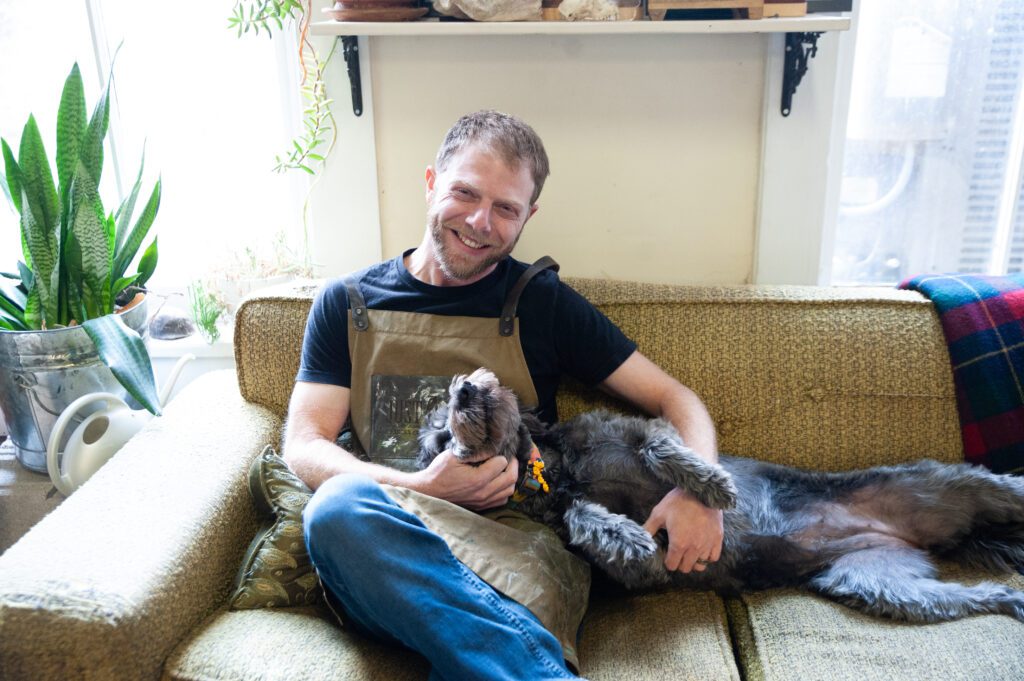
I joined a cooperative print studio and started creating. Then I got a job in the commercial printing industry running really high end, big production prints—factory work. I would do that during the day and then make my own art on the side; selling it at art fairs, on the street, or wherever I could.
Then my wife and I decided we wanted to go back to school. She was a graphic designer, but wanted to teach. I didn’t know what I was interested in exactly, but I wanted to find something between the commercial world and small-scale production. The fine art world never spoke to me. I tried to show work in galleries, but I didn’t want to frame my work behind museum glass and sell it for thousands of dollars. I really liked commercial printing and enjoyed the craft of running a printing press. But I hated the waste that came out of the commercial presses—I didn’t enjoy making stuff that wound up in the trash.
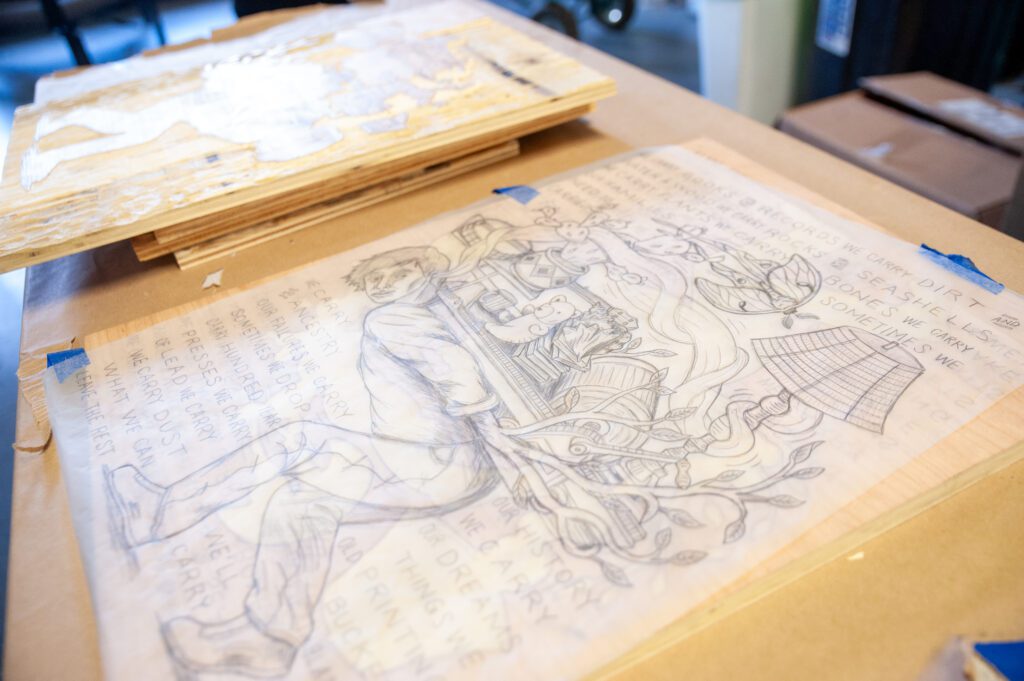
I wanted to find some sort of way to print on a small scale. I thought offset printing might be the way to do that, so I went to The University of the Arts in Philadelphia. They had this small book arts program, and a small one-color offset press where they were doing commercial printing.
But when I got there, I discovered letterpress printing. It was what I was searching for.”
“Letterpress was the perfect balance between manual commercial printing and manual presses. I could print 200 pieces of my art and sell them at a lower price, where in fine art printing, you would do 10 prints on really fancy paper, frame them, and sell them in a gallery for $500. With letterpress, I could make 100 posters on cheaper paper and sell them for $20 each.
But it was still a craft requiring skill. I enjoyed running the machinery, and learning how to do it. I was making this commercial work, but it was still making art. It wasn’t something that was going to wind up in the trash. Some people turned me on to Hatch Show Printing down in Nashville. It’s the old poster shop that used to make posters for Hank Williams, Elvis, Johnny Cash, and they’re still operating as a poster shop for contemporary artists. It’s in the Country Music Hall of Fame, actually inside the museum.
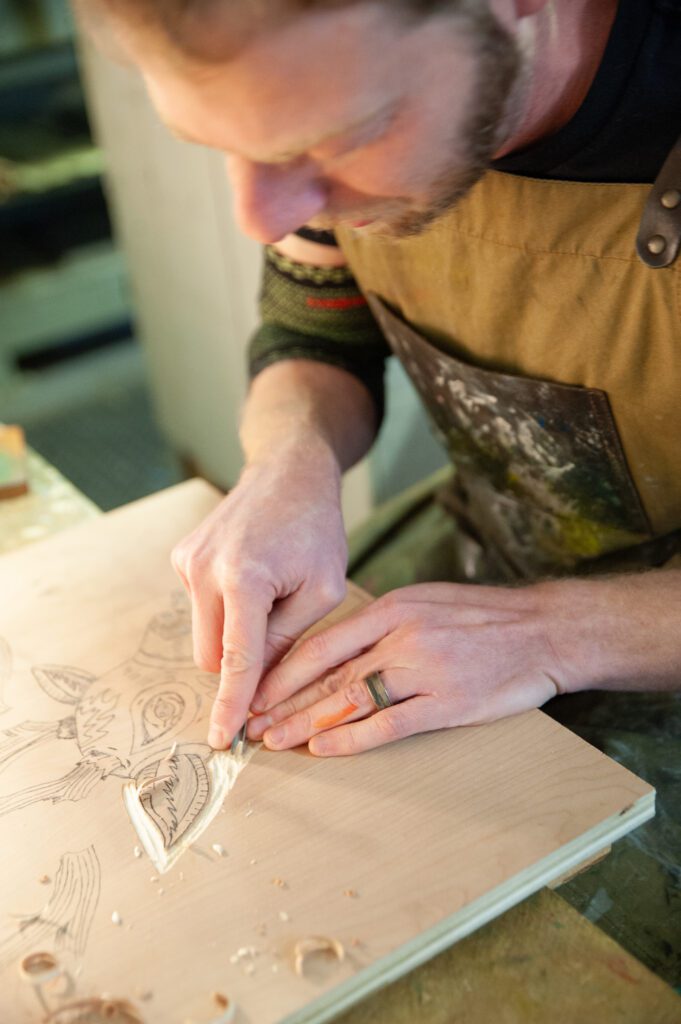

And there was a similar shop down in Knoxville, Tennessee called Yee-Haw Industries. They’re closed now, but back when I was in school, I called them up and asked if I could apprentice with them. It was a small shop with six employees and they were making really cool posters and art. They were making posters for bands, greeting cards, apparel, wholesale, and design work. I went down there for a summer and learned how they printed, as well as the business and how it operated at a commercial level. So that really that’s what introduced me to this little niche world that existed of letterpress printing and woodcut poster art.
We were living in Philadelphia, but my wife was offered a teaching position in Southeast Ohio, so we moved here and I immediately fell in love.
It felt like everything up to that point was leading towards this, and I didn’t even know it existed. I’m attracted to the limitations of woodcut and letterpress posters. Setting type can be a challenge: I need to fit a band’s name here, what type do I have that could fit in this space? And there’s only so much you can do with a woodcarving. There’s certain things you can’t achieve.

If I was trying to make a living as a digital illustrator or something like that, I wouldn’t have a chance. I’m a good artist, but there’s so many incredible illustrators out there. There’s not a lot of people doing woodcut, though. I went to South by Southwest; they have a big poster show there. And out of 100 artists from all over the world, I’m the only one doing woodcut posters. Most of them were doing screen printing. It’s insane that I get to be next to them. They’re the best illustrators I’ve ever seen in my life and I get to hang with them because I do something that stands out.
It’s a certain style and aesthetic. I’m really lucky that I’ve found this weird, niche, pocket to work in.”
“I kept discovering little things, and I would run towards whatever attracted me. We were living in Philadelphia, but my wife was offered a teaching position in Southeast Ohio, so we moved here and I immediately fell in love. I found a printing press and put it in our little one-car garage and started making things for myself on the side.
My first poster job was with Stuart’s Opera House. I went to their Nelsonville Music Festival and thought, ‘This place is awesome!’, so I approached the marketing director and discussed the idea of making posters. They were into the idea, but I remember him saying, ‘I’m not sure if we can make it work financially, we don’t know if folks that come to these types of shows will buy posters’. I told him that I’d make them for free.

They had a fundraiser coming up with the Dirty Dozen Brass Band, so I made a poster. The band loved it, people did too—and they sold!
The historic wood-cut style posters fit in with the region and the music, so I started making posters for Stuart’s Opera House. The first poster I was actually paid to make was for Dr. John. That was pretty sweet, and it’s still one of the biggest names I’ve ever made a poster for. Posters are like business cards: if Dr. John shares the poster for his event on social media and tags you, a lot of people see your stuff, and people started reaching out pretty quickly after that.
I moved the shop out of my garage and into an industrial building in town. I started hosting school groups and having little parties in my shop.
In those first few years, I did posters for the Old Crow Medicine Show, Belle and Sebastian, Willie Nelson, and Soundgarden. In 2014, an ad agency that represented Jack Daniels reached out and asked me to make a poster for the Jack Daniels World Barbecue Championship. I just finished up my ninth year doing posters for that event, which has been pretty cool.
During that time, I was also trying to be an active member of my community. I moved the shop out of my garage and into an industrial building in town. I started hosting school groups and having little parties in my shop. When I went to Nashville, I would see all these posters around town from the local print shop and it became kind of a part of the local style. I always wanted to make posters for my town.


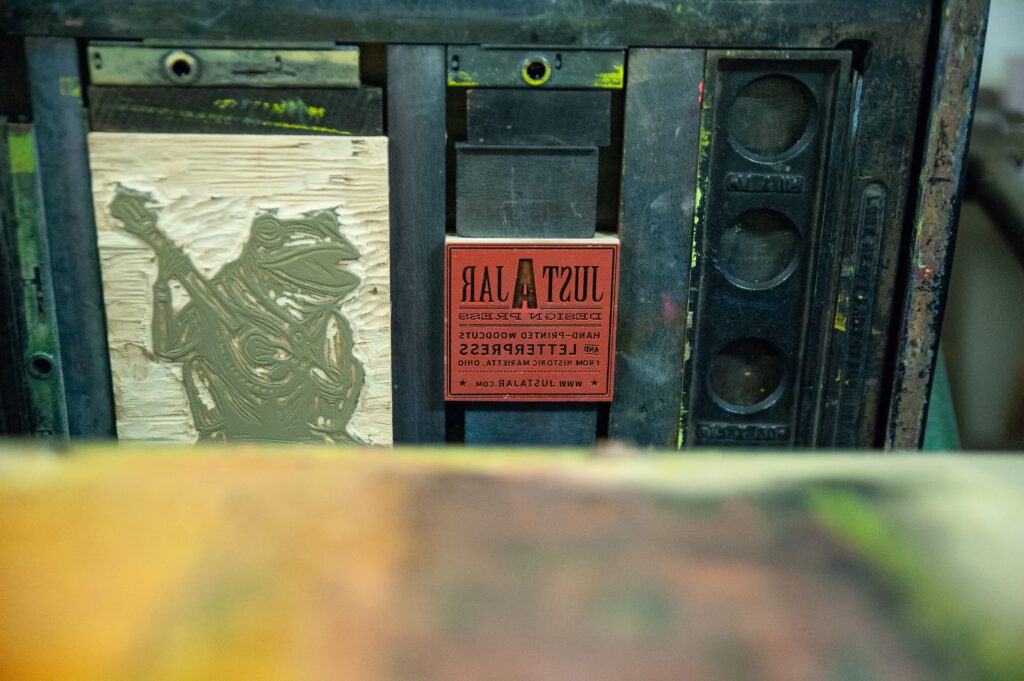

So I did.
I worked with the farmers market, my friend’s bike shop (in exchange for a kayak!), and a local brewery. I started making posters for Cub Scout groups, the roller derby team, our college baseball team, and these things would get hung around town, and then people in town would find me and ask me to do things for them.”
“I’ve been here on Front Street for six years, making posters, art, and shirts. I have a storefront that’s only open to the public two days a week, but I’m in here working all the time.
I have two printing presses, a Vandercook and a Chandler & Price, which is this big cast iron press from the 1880s that’s powered by a foot pedal. I’ve slowly collected a bunch of type and old letterpress cabinets, a lot of which came from the region. People donate things, or I’ll buy from old shops. So there’s a history to all of the equipment I’m using. It’s getting a second life. I host a lot of schools and camps here at the shop, and when you see kindergarteners print posters using type that’s 150 years old and used to print newspaper headlines from so long ago—that connection to history is pretty cool.
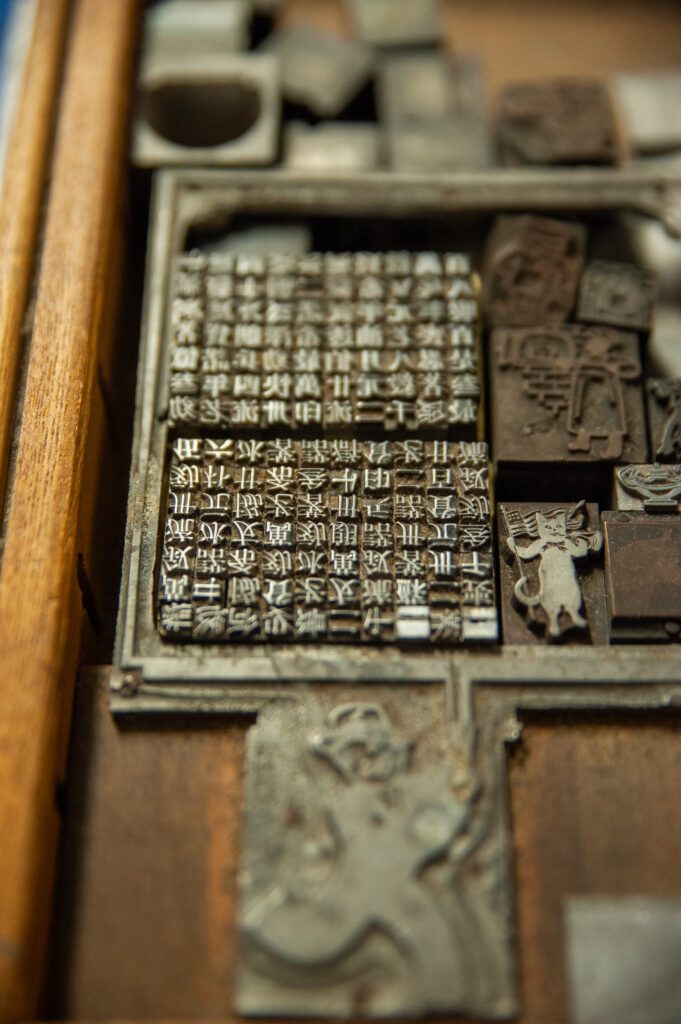

When I went through art school, the thought was, ‘Commercial art is bad, fine art is good’, that all art has to be super conceptual, and that you should strive to have your work in galleries. Why? I always wanted to make things that people can enjoy. I want to make things that are accessible. I want to make stuff for my friends.
I also think about growth and business. When I started, I didn’t have any business skills and the prevailing thought was to grow as much as you can so you can make as much money as possible. That never made sense to me, either. I’ve had opportunities to grow my business and, in certain places, I’ve turned that down. Take a wholesale opportunity, for example: I could say yes and really expand, but that always felt like it would be more of a burden. I work really hard, but I also have a small enough operation that I can take a few weeks off during a slow period. I don’t have to worry about employees that I have to take care of. So I have intentionally tried to stay small and that’s actually harder than you would think.”
— Bobby Rosenstock, Just A Jar Design Press
Marietta, Washington County
#WeAreOhioSE




